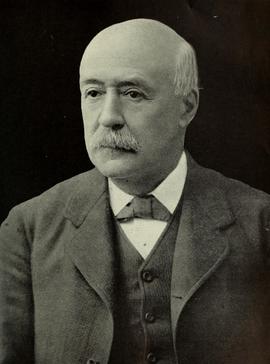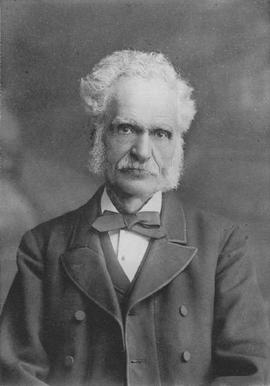Collector to ZSL
Mitchell was born in Chalfont St. Peter, Buckinghamshire. He graduated from Christ Church, Oxford in 1836.
He illustrated George Robert Gray's 'Genera of Birds', but finding himself too busy with his work for the Zoological Society of London, he employed the German illustrator Joseph Wolf as his assistant on the project.
Mitchell was elected into the Linnean Society in November 1843. He was the first paid secretary of the Zoological Society of London, taking up the post between 10th February 1847 and 6th April 1859, instigating the construction of the first public marine aquarium in the Zoological Gardens, which opened on 22nd May 1853. He was credited with rescuing the zoo financially by publishing attractive images of a few 'star' animals, thus greatly increasing the number of visitors in the late 1840s. He was also a collector and dealer in skins and eggs.
He resigned his post as Secretary of the Zoological Society of London on 6th April 1859, and he became the Aquarium Director of the Jardin d'Acclimatation in Paris, but died on 1st November 1859 after his shot himself only months after taking up the position.
He married Prudence Philips Willes, daughter of Rev Edward Willes of Walcot, near Bath on 30th October 1837.
Alexander Emmanuel Rodolphe Agassiz, son of Louis Agassiz and stepson of Elizabeth Cabot Agassiz, was an American scientist and engineer.
Spencer Fullerton Baird was an American naturalist, ornithologist, ichthyologist, herpetologist, and museum curator. Baird was the first curator to be named at the Smithsonian Institution. He eventually served as assistant Secretary of the Smithsonian from 1850-1878, and as Secretary from 1878 until 1887. He was dedicated to expanding the natural history collections of the Smithsonian which he increased from 6,000 specimens in 1850 to over 2 million by the time of his death. He published over 1,000 works during his lifetime
Sir Henry Winston Barron, 1st Baronet DL, was an Irish baronet and politician, who stood at nine different general elections
Henry Walter Bates was an English naturalist and explorer who gave the first scientific account of mimicry in animals. He was most famous for his expedition to the rainforests of the Amazon with Alfred Russel Wallace, starting in 1848. Wallace returned in 1852, but lost his collection on the return voyage when his ship caught fire. When Bates arrived home in 1859, he had sent back over 14,712 species (mostly insects) of which 8,000 were (according to Bates) new to science. Bates wrote up his findings in the work The Naturalist on the River Amazons
Charles John Bayley was a colonial administrator and Governor of the Bahamas


